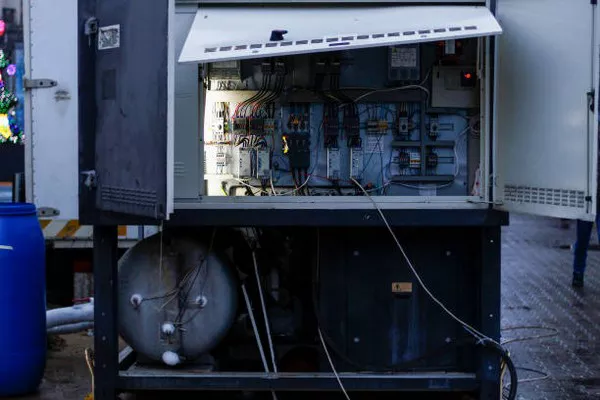In an era where power outages are increasingly frequent due to natural disasters and infrastructure issues, standby generators have become an essential investment for homeowners and businesses alike. These generators provide an automatic backup power source, ensuring that essential systems remain operational during an outage. However, understanding the cost of installing and maintaining a standby generator involves considering multiple factors. This article delves into the various elements that influence the price of standby generators and provides a detailed cost analysis.
Types of Standby Generators
Standby generators come in various sizes and capacities, tailored to different needs. The most common types are:
Home Standby Generators: Typically ranging from 7 kW to 24 kW, these generators are designed to power essential home appliances and systems. They automatically start during an outage and can run on natural gas, propane, or diesel.
Commercial Standby Generators: These are larger units, often exceeding 150 kW, and are used to power businesses, hospitals, and other critical facilities. They ensure continuous operation of critical systems during extended power outages.
Cost Breakdown
The cost of a standby generator is influenced by several factors, including the generator’s size, fuel type, installation complexity, and maintenance requirements. Here is a detailed breakdown of these costs:
Generator Unit Cost
Home Standby Generators: The cost for these units typically ranges from $2,000 to $5,000 for smaller models (7-12 kW). Larger models (13-24 kW) can cost between $3,000 and $10,000.
Commercial Standby Generators: Prices for commercial units start at around $10,000 for basic models and can exceed $50,000 for larger, high-capacity units.
Installation Costs
Installation costs vary widely based on the complexity of the installation, local labor rates, and the existing infrastructure. On average, installation can add another $3,000 to $5,000 for home generators. Commercial installations, due to their complexity, can range from $10,000 to $25,000.
Fuel Type
Natural Gas: Generators that run on natural gas are often more convenient for residential areas with existing gas lines. These tend to be more economical over the long term since natural gas is usually cheaper than other fuels. However, the initial setup may include additional costs for extending gas lines.
Propane: Propane generators require a storage tank, which can add to the initial cost. Propane is generally more expensive than natural gas but is a good alternative in areas without natural gas infrastructure.
Diesel: Diesel generators are typically more expensive upfront and require more maintenance due to fuel quality concerns. However, they are often chosen for their reliability and efficiency, particularly in commercial settings.
Maintenance Costs
Regular maintenance is crucial for the reliable operation of standby generators. Maintenance costs can range from $200 to $500 per year for residential units and $1,000 to $2,500 for commercial units. These costs cover routine inspections, oil changes, and replacement of parts such as filters and spark plugs.
Additional Costs and Considerations
Several additional factors can influence the overall cost of owning a standby generator:
Transfer Switch: A transfer switch is necessary for safely switching the power supply from the grid to the generator. This can cost between $500 and $1,500, depending on the size and complexity.
Permits and Inspections: Local regulations may require permits and inspections, which can add a few hundred dollars to the total cost.
Soundproofing: For generators installed in residential areas, soundproofing might be necessary to comply with noise regulations. Soundproof enclosures can cost between $500 and $2,000.
Battery Backup: Some systems include battery backups to ensure the generator starts even if the primary battery fails. These systems can add another $500 to $1,000 to the total cost.
Total Cost Estimate
Considering all factors, the total cost of purchasing and installing a home standby generator can range from $5,000 to $15,000. For commercial units, the total cost can range from $20,000 to over $100,000, depending on the capacity and specific requirements.
Financing and Incentives
Given the high costs, many manufacturers and dealers offer financing options to make the purchase more manageable. Monthly payment plans can range from $100 to $300 for residential generators, while commercial financing options vary more widely based on the loan terms and the total amount financed.
Additionally, there are often local, state, or federal incentives available for installing standby generators, particularly if they are part of a broader disaster preparedness plan. These incentives can significantly offset the initial investment.
Long-term Value
While the upfront costs of a standby generator can be substantial, the long-term benefits often justify the investment. For homeowners, a standby generator provides peace of mind, protecting against food spoilage, frozen pipes, and loss of heating or cooling during power outages. For businesses, the cost of a generator can be offset by preventing lost revenue, protecting sensitive equipment, and maintaining customer service during outages.
Moreover, the presence of a standby generator can increase property values. Homes equipped with standby generators are often more attractive to buyers, particularly in areas prone to power outages.
See Also How Long Does a Hospital Generator Last?
Conclusion
Standby generators represent a significant but worthwhile investment for both homeowners and businesses. The cost varies widely based on the size of the generator, installation complexities, fuel type, and ongoing maintenance requirements. By understanding these factors, prospective buyers can make informed decisions and ensure they choose a system that meets their needs while providing reliable backup power for years to come.
Ultimately, while the financial outlay can be considerable, the assurance of uninterrupted power supply during outages is an invaluable asset. As power reliability continues to be a concern globally, the role of standby generators in safeguarding homes and businesses is more crucial than ever.

